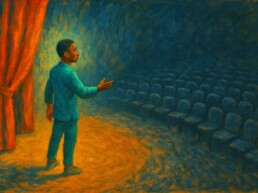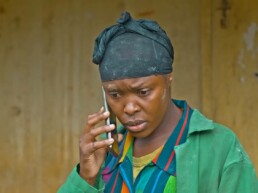Now, to write this one, I had to call in the big guns.
AKA, my 9-year-old nephew.
Kizazi Moto is an Afrofuturist animated anthology featuring 10 standalone stories. The film is produced by Triggerfish, a company with African roots, housed under Disney Plus’s roof. It would only be right to have engaged a child in Kizazi Moto’s review, as this is the chief targeted demographic. For context, my nephew is an avid consumer of digital child entertainment, more so animation and cartoons. He is partial to anime-type cartoons, with Dragon Ball Z being his favorite. Add anything remotely Justice League, Marvel, or Avatar-related, and you’re now deep in his territory.
Needless to say, the bar is high.
I found myself tense over his reaction to Kizazi Moto. I wanted him to take to it so bad, you would have thought I am being compensated to promote the show. You see, it is one thing to theorise the importance of Afrocentric child entertainment. It is another, altogether, for the child to actually enjoy it.
Bixby, play Vitu Kwa Ground ni Different by Vallerie Muthoni.
Yay! or Nay?
The verdict is in.
Drumrolls please…
Ladies and gentlemen, we have ourselves a winner.
It’s a hit!
For my nephew and I both!
Some stories we enjoyed more than others, yet in all, Kizazi Moto’s body of work did more than merely impress us. It exceeded our expectations. I was pleasantly surprised by how taken he was by the show. He was so engrossed, that the final act left him restless.
“That’s it?” he lamented,” No more episodes?”
Scalability
Each of the 10 stories was confined to a runtime not exceeding the thirteen-minute mark. Suffice to say the creators certainly had their work cut out for them to impress within such a tight window. This time frame, though seemingly constrained, was ample to whet our appetites, leaving us craving for more.
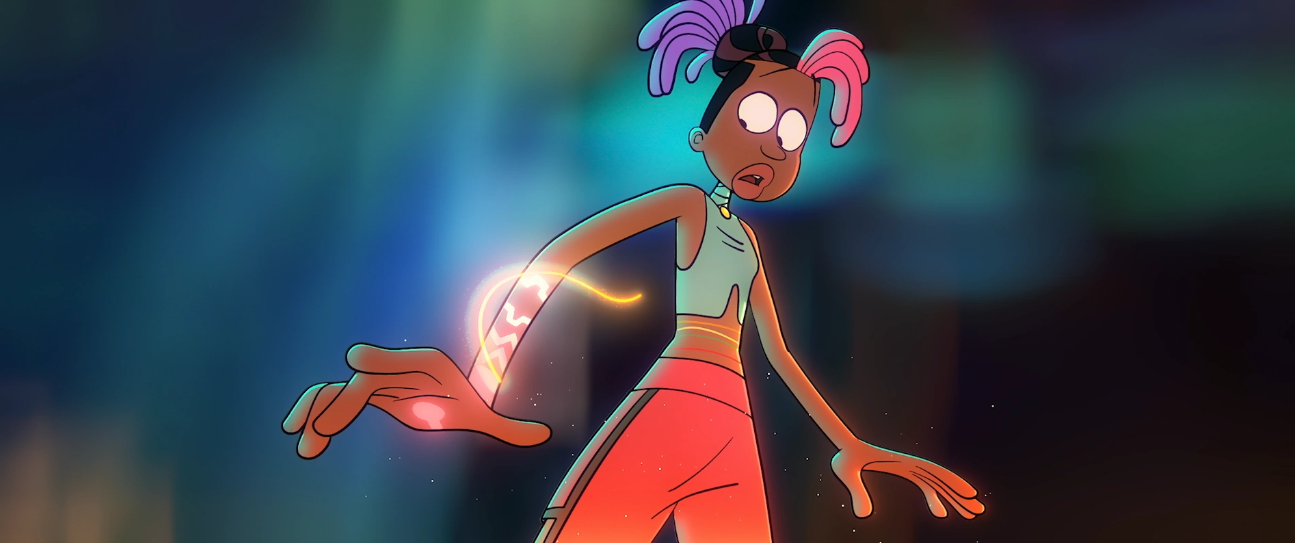
It is conceivable to scale entire animation franchises from a select of these bite-sized stories. The ending of some, Herderboy, Mkhuzi: The Spirit Racer, Stardust and First Totem Problems to mention but a few, feel like an exciting beginning of the beginning, a dazzling first act of a drama that has just began. Others like You Give Me Heart and Moremi leave you with a sense of finality, having reached a definitive conclusion. The former anthologies hold promise beyond their time ceilings. Their robust plots have storytelling and characters that can easily sustain longer narratives, potentially spanning full-length or even feature-length films. Disney has a good track record of giving beloved characters more screen time in many other shows, and Kizazi Moto shows lots of promise on this front.
Sounds and Music
There are features in oral literature that Okumba Miruka compounds in his book, Studying Oral Literature, under an umbrella called “stock”. He describes the aforementioned as that which is recurrent across a community’s narratives for recognizability’s sake. To illustrate, stock phrases are statements repeatedly used in storytelling that become ingrained in oral traditions. These include the phrase, “A long time ago…” often said at the onset of a story. In the same breath, stock characters are those personas that reoccur across multiple stories in a community’s narratives. These personalities are known for their habits and distinctive traits, serving as familiar markers for listeners. For example, an ogre is typically introduced to depict a non-human, large, ugly and menacing villain. By utilizing stock elements, oral literature is able to maintain a sense of continuity and cultural identity within a community’s storytelling traditions. In light of this understanding, I dare coin the term stock music to refer to shared musical elements existing within a single anthology, or sequences of the same.
Walk with me.
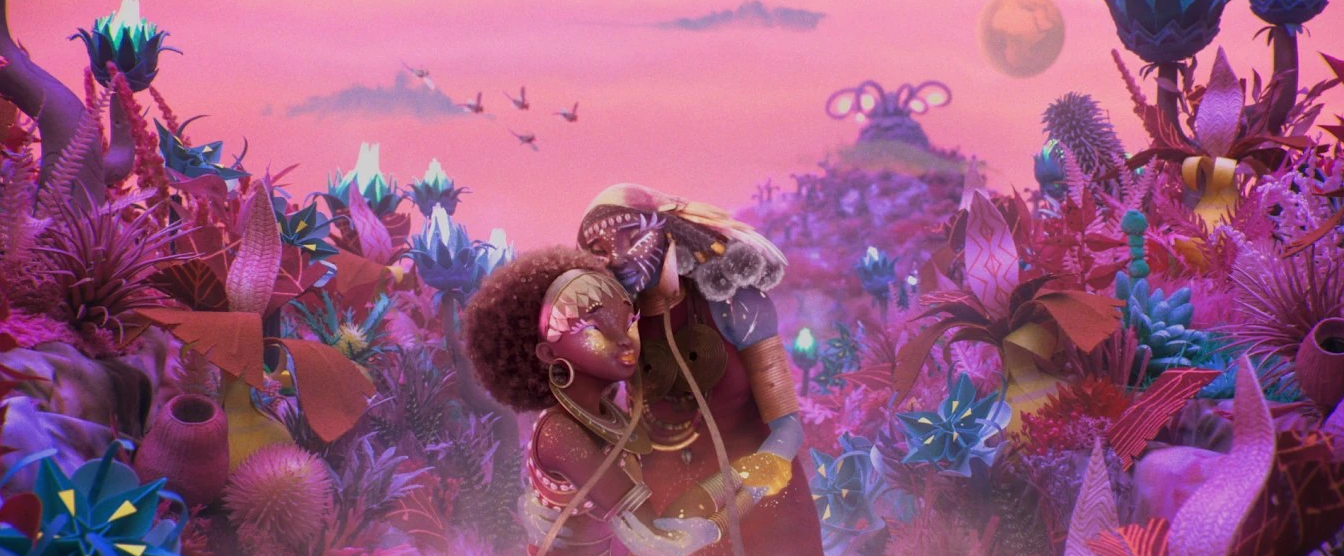
Granted, the stories herein reviewed are different, yet, they coexist within a common vessel – namely Kizazi Moto. This anthology spans diverse countries across Africa, and even more diverse communities, each presenting unique cartoon styles and storylines. Hence the need for a commonality, a bow whose knot ties together the various threads of storytelling. What is this bow? The theme song. Or as previously alluded, the stock music. The African-type beat playing as each title starts is just as catchy as it is appropriate for the film. The tune creates a cohesive viewing experience for the audience by providing a consistent auditory backdrop.
Besides the stock music, Kizazi Moto is woven with other tunes, sounds and soundtracks reminiscent of the African continent’s vibrant melodies, which add a layer of cultural richness and familiarity. Highlighting the film’s African soundscape are the ululations performed by Enkai and her mother Shiro. This traditional vocalization goes, “Alilililili,” and is called “ngemi” among the Agikuyu, the community within which Enkai borrows its film’s heritage. It is not just some random noise, but an important marker which holds cultural substance to date.
The human mind, weary of sifting truth from fiction, can succumb to the illusion of a lie repeated often enough.
Language, Dialect and Names
Here’s a little backstory.
Prior to our viewing of Kizazi Moto, I made a point neither to brief my nephew on the film’s setting nor its cultural relevance. I wanted his reaction as raw as can be. His interest piqued from the start, more so upon hearing the characters’ accents. His eyes dazzled with excitement when he was greeted with familiar names of people and places. He was equally intrigued when he picked on Swahili words. It was very heartwarming to see his eyes sparkle when Herderboy’s lead character, Kadogo, a boy’s whose name we know to mean “very little” entered the scene. Though small these may seem, these factors hold considerable sway over the contemporary African child’s perception and attitude towards their own language, local dialect and native names.
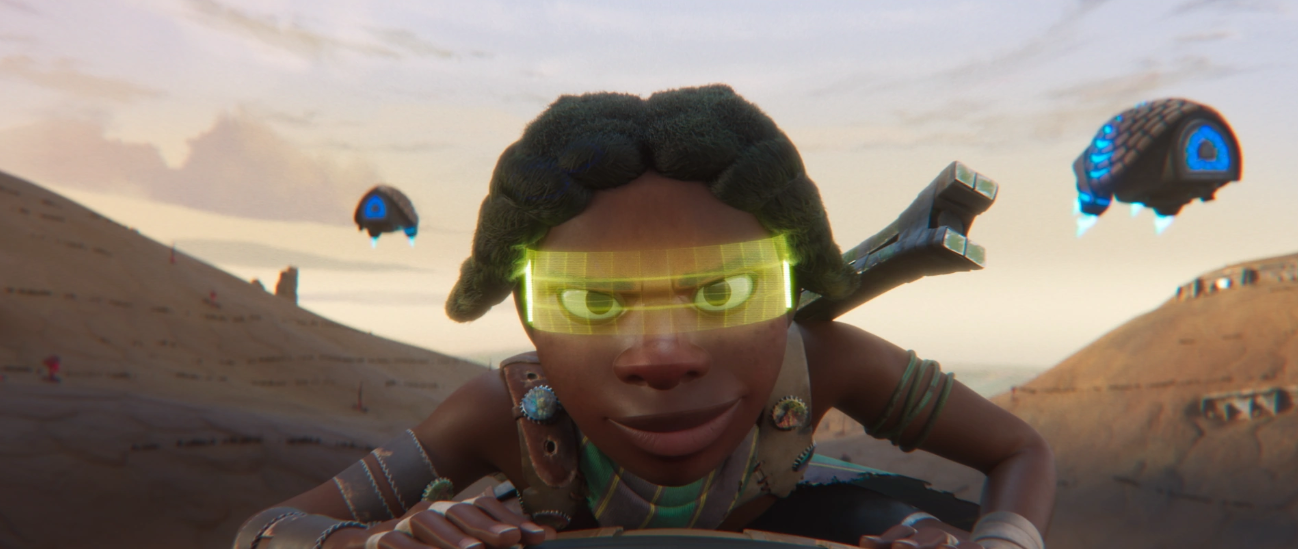
Thematic Areas
In an article titled “The Curious Case of the Young, Contemporary African’ by yours truly, I closed with these words, ad litteram:
Granted, the relevance of Mama Africa’s historical heritage should not be downplayed nor overlooked. After all, she remains to be the cradle of mankind. That said, we can reminisce her pre-colonial heritage acknowledging both its virtue and vice. Rebuke her colonial history for the monstrosity it was. But perhaps, more proactively, we should confront her present presence in a globalized economy, and stay hopeful of what lies ahead.
African filmmakers crafting movies for international markets typically sacrifice depictions of the realities of modern African life on the altar of perceived expectations of what constitutes “African enough.” The human mind, weary of sifting truth from fiction, can succumb to the illusion of a lie repeated often enough. The art of being a good guest is knowing when to leave. The art of being a good conversationalist is knowing when to be quiet. The art of being a good African film creator is knowing when to stop feeding the monster that is these aforementioned imposed stereotypes, lest we’ll reinforce the bias we so badly want to overcome.
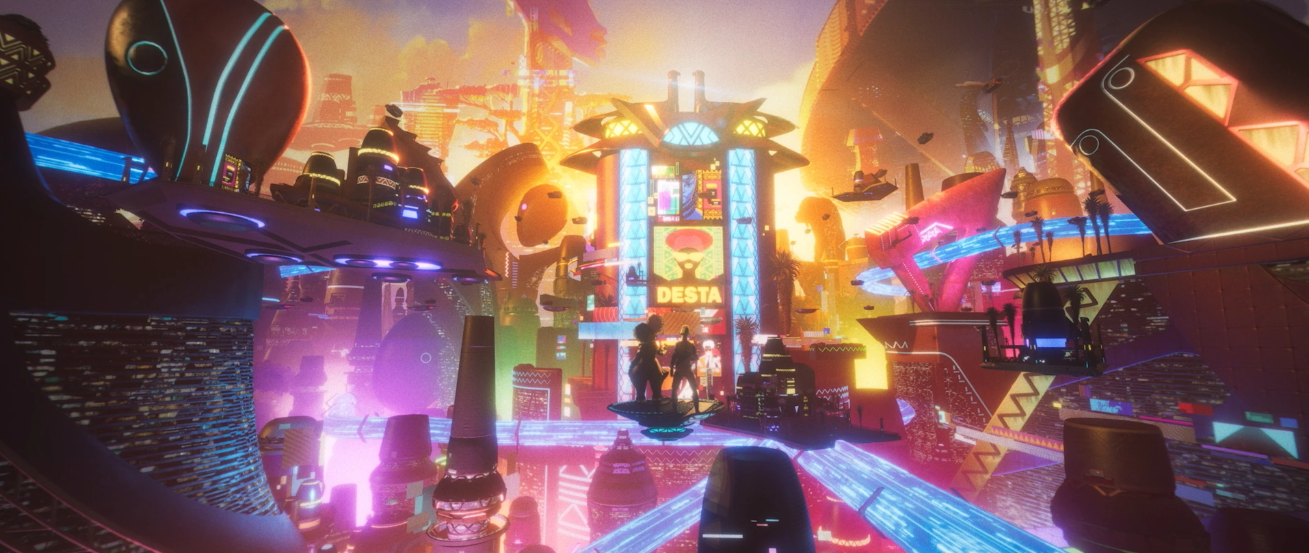
Kizazi Moto is a blend of ten independent stories that capture fantastical African perspectives in Afrofuturistic fashion. The creators explored the full spectrum of African time – the echoes of the past, the lively present, and how these threads weave into the future. Eschewing clichés, these storytellers have brought a myriad of alternative African experiences that pulsate with the continent’s energy. The themes explored in the stories vary. The depictions of culture, tradition, humanity, family, spirituality to name but a few; are all true to the African motif whilst being of a fictitious nature. No matter how heavy the theme, these animated stories break it down into an easy-to-follow format for audiences of all ages, but especially for the children.
Animation Visuals
Whereas storytelling comes naturally to African creatives, the use of film as a tool for narration is an entirely borrowed craft. This is especially true for animation, a format requiring a completely new skillset. Every story presented in Kizazi Moto explores animation in its own way, and I must say, an exceptional job was done. From classic 2D styles as in Hatima, to cutting-edge CGI as in Stardust. From familiar anime-style productions as in Mkhuzi the Spirit Racer, to more contemporary visual techniques, as in Mukudzei.
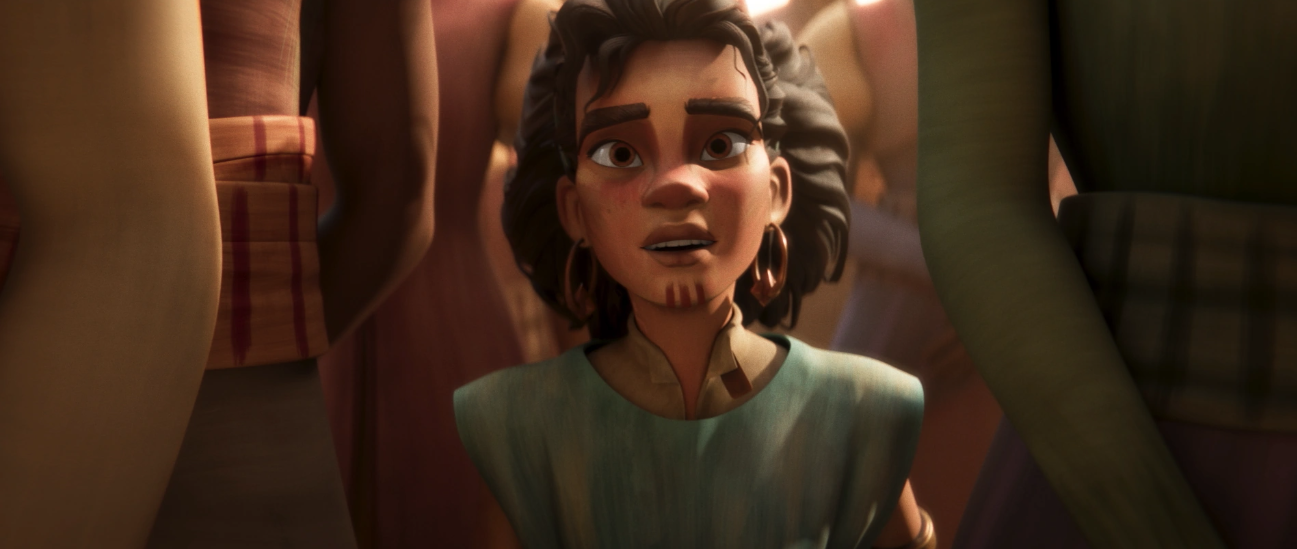
The diverse range of animation styles showcased in Kizazi Moto highlights the unarguable ability which African creatives have to excel in this medium, when provided with the right environment and conditions. With continued practice and exploration, these and other African creators have the opportunity to further push boundaries and create more visually stunning narratives that resonate with audiences worldwide.
Here’s the bummer
It is bewildering to note that a production, born largely from the minds and efforts of African creatives, remains beyond the reach of the continent’s own people. Disney+ is currently out of reach for most Africans, with geo-restrictions limiting access in 48 out of 54 countries. It’s a shame, but to watch Kizazi Moto, I had to resort to unofficial streaming, which sidesteps the system that rewards creators financially. Imagine that, a continent shut out of its own stories. The disconnect is glaringly apparent. Begging the question, for whom was Kizazi Moto meant? The unavailability of this show to almost all African viewers not only reflects a missed opportunity for cultural exchange within the continent and a missed opportunity for the creators to generate revenue in markets that would instantly resonate with the work. It also underlines the complexities of content distribution in the digital age.
Parting Shot
First of all, if you made it this far, props to you! Such commitment to the course, I stan.
Go ahead, fetch yourself a glass of water, you deserve it. Let’s get some blood pumping in your legs. One last thing before you go.
The sheer amount of talent, experience and resource invested in the entirety of this production is staggering, and it shows. To write this review, I had to rewatch, Kizazi Moto an unholy number of times. My appreciation for the work deepened with each viewing. Kizazi Moto has set a precedent as the first intracontinental African anthology series, befittingly so. My nephew and I were obsessed with these shorts – who knows, maybe a movie will come next! In the meantime, check out Kizazi Moto – perfect for family movie night!
Shalom Kendi Mbae
A Writer. A Pan-African. A Conversationalist.
Words are to me what numbers are to a mathematician.
This little light of mine, I'm going to let it shine.


